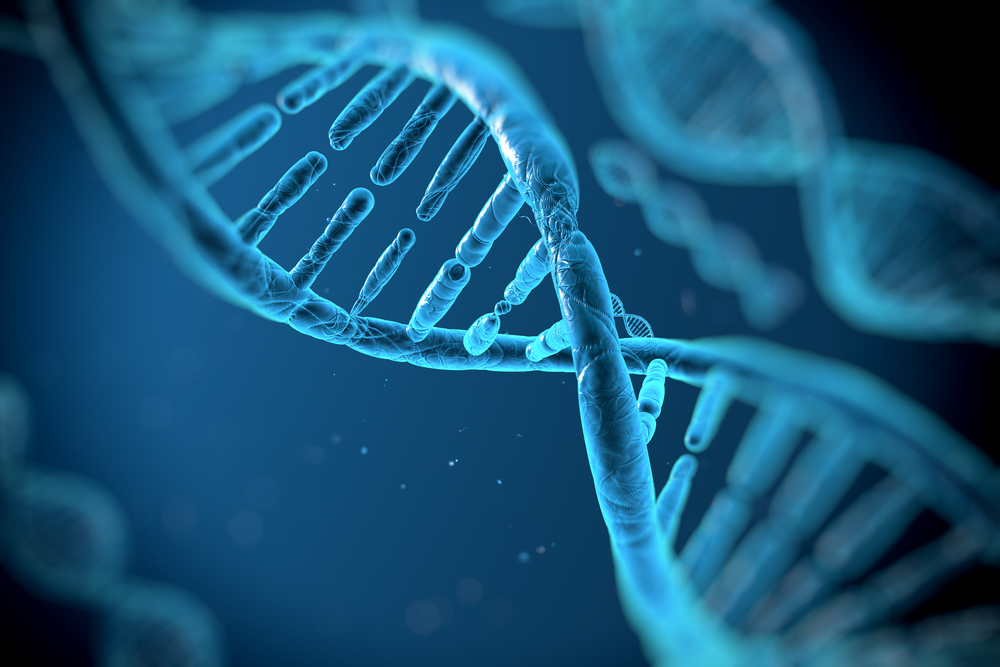ADHD often runs in families. But what are the genetic mechanisms that may support this connection? ADHD and neurodiverse conditions are related to multiple genetic variants or single nucleotide polymorphisms (SNPs).1,2 One SNP receiving attention affects the fatty acid desaturase 2 (FADS-2) gene. This gene helps to maintain healthy levels of omega-fatty acids in the body, which is crucial for cognitive development and function. Omega-3s affect cell membrane integrity, which, in turn, can affect the passage of key chemical signaling agents, including dopamine. Individuals with ADHD frequently have dopamine deficiencies in specific regions of their brain.
Omega Fatty Acid Metabolism
Alpha-linolenic acid (ALA) converts to eicosapentaenoic acid (EPA) and eventually docosahexaenoic acid (DHA) through a series of steps. Several of these steps require enzymes such as ∆6 desaturase and elongase. Genes involved in fatty acid metabolism govern these enzymes. Fatty acid desaturases are key in determining both plasma and tissue fatty acid profiles. Variations in fatty acid desaturase genes can modify whole-body lipid metabolism.
Two desaturase enzymes (delta-6 and delta-5) are necessary to convert the simplest omega-3 and omega-6 essential fatty acids to the more highly unsaturated fatty acids (HUFAS) that the brain needs. In humans, there is poor enzymatic conversion of EPA to DHA. Genetic variants in FADS-2 affect critical enzyme responsible for converting EPA to DHA, further reducing this conversion.3,4 Interestingly, a SNP in FADS2 has been significantly associated with ADHD, suggesting that the genetic profile of ADHD may have further effects on PUFA metabolism.1
Delta-6 desaturase is usually the rate-limiting enzyme in this pathway for HUFA synthesis within the body, although delta-5 (coded by FADS1) also plays a role. If these enzymes don’t function at their highest level, dietary omega-3s aren’t adequately incorporated into the cell membrane structure. Genetic differences and the presence of external factors (such as alcohol or other types of fats) hinder the function of these enzymes. That slows the conversion process and ultimately impacts omega-3 and omega-6 fatty acid uptake and incorporation into cell membranes.
A Genetic Link
A number of these desaturase enzymes are all coded from a specific genetic region located on the 11th chromosome in humans, located at the 11q25 region. Coincidentally, this region is located near the 11q22 region, which has been linked to ADHD.5 The closer two genetic regions are, the higher the chances they will be (passed on together from parent to child. In other words, gene forms located near each other on a chromosome are more likely to be passed on together. That suggests that the 11q22 ADHD region may be influenced by some of the genes from the nearby 11q25 region.
Brookes and coworkers studied the association between these desaturase genes and ADHD.4 They found that the 11q25 region contained three genes that code for fatty acid desaturase enzymes located next to each other (FADS-1, FADS-2, and FADS-3). These genes each exist in different allele forms, with slightly different DNA configurations – in some cases by as little as one letter in the DNA code. Genetic variation in these genes can modify desaturase activity, which correlates with increased prevalence of ADHD.
This group saw a significant 60-70% greater likelihood in the prevalence of ADHD stemming from an allele in the FADS2 gene (SNP rs498793), which codes for a fatty acid desaturase enzyme.6
To summarize, evidence suggests that omega-3 fatty acid metabolism plays a major role in ADHD, due in part to omega-3’s effects on maintaining cell membrane function, structure, and integrity.
1Gizer IR, Ficks C, Waldman ID. Hum Genet. 2009;126: 51-90.
2 Mick E, Faraone SV. Child Adolesc Psychiatr Clin N Am. 2008;17: 261-284.
3 Nestel P, et al. Am. J. Clin. Nutr. 2002;76:326–330.
4 Xie L, Innis SM. J Nutr. 2008;138:222–8.
5 Arcos-Burgos M, Castellanos FX, Pineda D, et al. Am J Hum Genet. 2004;75(6):998-1014.
6 Brookes KJ, Chen W, Xu X, Taylor E, Asherson P. Biol Psychiatry. 2006;60(10):1053-1061.





